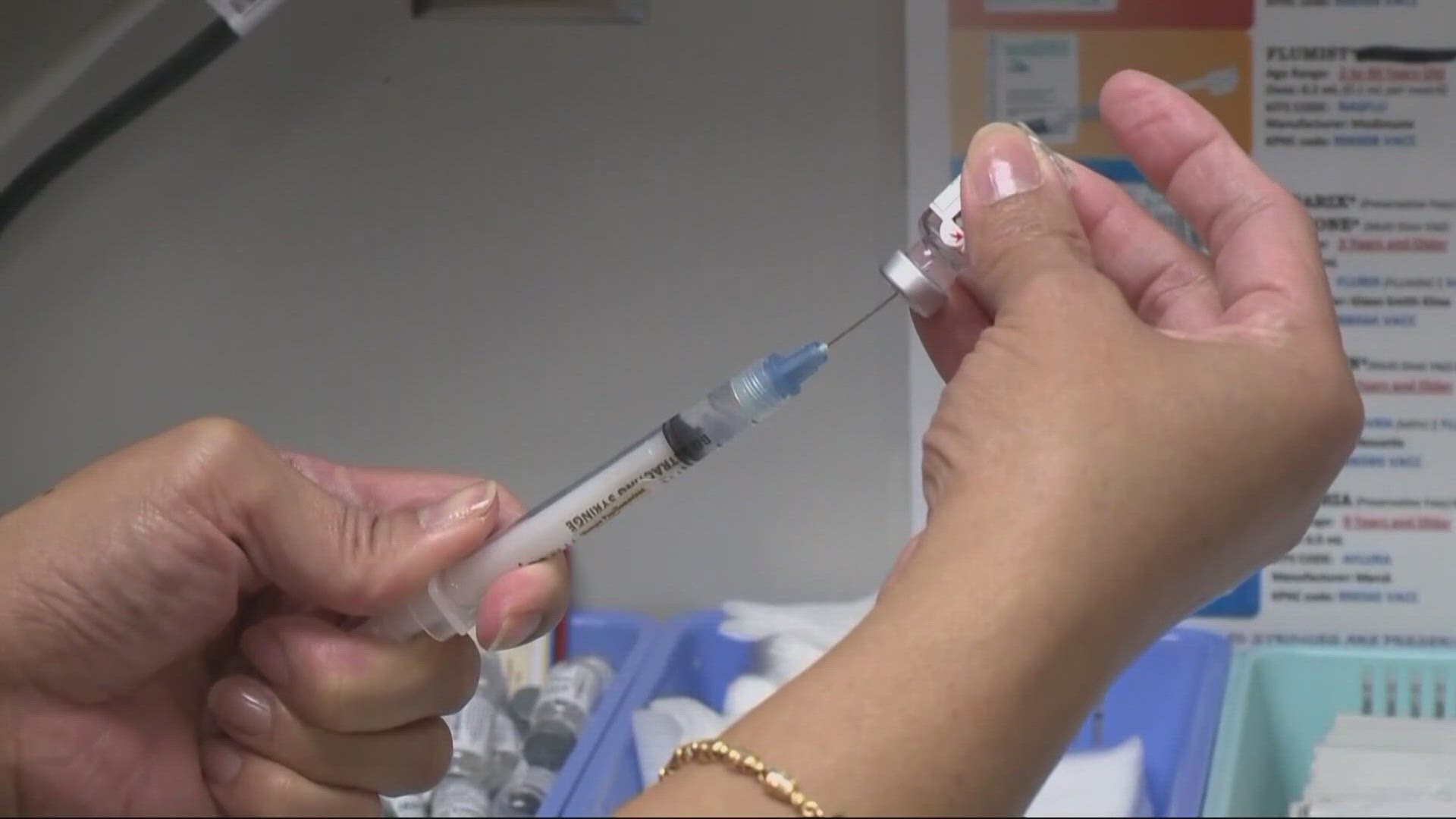Oregon is evacuating coronavirus patients to a nursing home that in August was found to have failed to vaccinate residents, not keep enough workers on shifts and put a resident at risk of a fatal bacterial infection, state records show.
Pacific Health and Rehabilitation of Tigard is one of two senior care facilities that the Oregon Department of Human Services is paying up to a total of $13.5 million to take nearly 100 coronavirus patients from other nursing homes.
Department officials have touted their plan as key to managing coronavirus outbreaks in Oregon’s senior care homes.
“These centers will provide crucial support,” said Mike McCormick, interim director of the DHS branch that oversees senior care homes. “Making dedicated care centers available reduces the chance that more residents could be exposed.”
Pacific’s record raises questions about its ability to care for dozens of sick patients.
Its substandard care record stands out among Oregon nursing homes. It is one of three in the state – out of 130 total – to receive the lowest possible grade on a federal metric on resident quality of care – “much below average.”
Pacific’s owner, Kent Emry, said violations the state found last year and the bad grade misrepresent the care residents get and have no bearing on how staff will treat the incoming coronavirus patients.
“My employees are amazing people who are stepping up and doing something incredible,” Emery said.
The nursing home’s record reflects how complex its residents are – not the quality of care, he said. He accepts residents who have high needs, he said, and the federal data reflect those difficulties – not inherent problems with the quality of care.
The state chose Pacific as an emergency center because it is in Washington County, which has many coronavirus cases, said Elisa Williams, a spokeswoman for the Department of Human Services. Pacific also has the ability to fully quarantine coronavirus patients and it was able to open up 50 beds quickly and could further expand capacity, Williams said.
The company addressed all of the problems state inspectors found last year, Williams said in an email, and there hasn’t been a single substantiated case of abuse at the home since 2018.
The nursing home “does not have any current licensing concerns,” she said.
Long-term care ombudsman Fred Steele, Oregon’s chief advocate for the elderly, said he was encouraged that the home fixed all the problems officials found in 2019. But, he said, “that is a recent enough history to matter” and the nursing home should face greater oversight as a result.
The state will pay Pacific $1,375 a day for each of the 50 beds and an additional $175 a day for every bed that is filled, for a maximum of about $7 million over the 90 days of the contract.
Laurelhurst Village in Portland, the other nursing home working with the state, has the same terms and could be paid up to about $6.5 million for 47 people with the coronavirus. The federal government has scored its quality of care “above average.”
It’s possible that the contracts would be cut short if Gov. Kate Brown ends the coronavirus state of emergency.
Hundreds of nursing and assisted living home residents have contracted the virus in Oregon and dozens have died, including at least 15 at Healthcare at Foster Creek, the site of the largest known COVID-19 outbreak in the state with more than 70 cases.
As of Thursday afternoon, all residents at Pacific Health and Rehabilitation had been moved to other facilities managed by Emry’s Dakavia Management to make way for the coronavirus patients. Emry said the first patient was expected to arrive at some point Thursday.
Pacific has three separate wings, Emry said. Two will be for coronavirus patients and the third will be for staff who do not want to go home for fear of infecting others. The three units have entirely different ventilation and heating systems, he said.
The state will help provide personal protective equipment and the home so far has been successful obtaining the supplies it needs, he said.
Some of the problems state inspectors discovered at Pacific in an August inspection pertain directly to infection control.
They cited the nursing home for 24 deficiencies overall including a worker who used her bare hands when handling the catheter equipment of a resident who was at risk of contracting MSRA, a potentially deadly bacterial infection.
“This placed residents at risk for cross-contamination and infection,” inspectors wrote in a report summarizing their findings.
Inspectors also found two residents who did not get pneumonia vaccines and staff who were not wearing protective equipment when doing laundry.
Among other problems the inspection report listed: One resident with a fractured pelvis spent hours in excruciating pain because workers didn’t get the person medications. Out of the 35 days for which inspectors reviewed records, the nursing home failed to meet minimum staffing standards on 10. Twice, staff members unnecessarily gave a resident morphine.
Federal reports – based on the state inspections – show wide disparities between the treatment Pacific residents received compared to residents in the average Oregon nursing home. Pacific got one out of five stars or “much below average” for quality of care and inspection history.
Three and a half times as many long-term Pacific residents had symptoms of depression, for instance, and 16 percent of residents had a catheter left in their bladder, compared to 3 percent in the average Oregon nursing home and 2 percent in the average United Stated nursing home.
Of the long-term Pacific residents who needed a vaccine to prevent pneumonia, 75 percent got one, as compared to 94 percent in other Oregon homes. Of the short-term Pacific residents who needed a flu shot, 61 percent did, compared to 81 percent for the average Oregon nursing home.
The home scored “above average” in staffing levels.
Emry said Pacific and its workers are ready for the coronavirus patients. Because all of the residents will have the virus, spreading the infection among them will not be a concern, he said.
That also will allow staff to conserve equipment because they won’t have to take off all their gear when going between residents, he said.
Emry said he has offered staff substantial pay raises and that many have “stepped up” to work at the nursing home.
“They’re saving these people’s lives,” Emry said. “It’s a big deal.”
At Laurelhurst Village, state inspectors in February 2019 found violations including residents put at risk of infections and one worker who did not wash her hands while checking three residents’ blood sugar levels.
Three months later, officials found that Laurelhurst Village failed to meet minimum staffing standards 16 days out of the 39 reviewed.
It is one of 116, or 90 percent, of Oregon senior care homes that scored average or higher on quality of care.
-- Fedor Zarkhin
desk: 503-294-7674|cell: 971-373-2905|@fedorzarkhin
This article was originally published by The Oregonian/OregonLive, one of more than a dozen news organizations throughout the state sharing their coverage of the novel coronavirus outbreak to help inform Oregonians about this evolving health issue.



